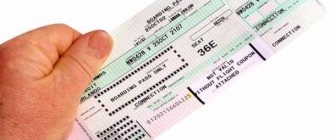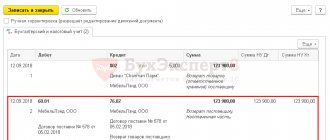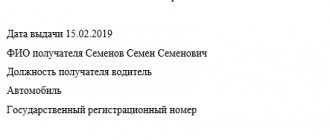- February 7, 2017
- Articles
| Alexey Chernyshev, expert of the Digital Design corporate systems department |
It's not an easy time for retail right now. The purchasing power of the population, as well as their real disposable income, has been declining for 3 years in a row. The dynamics of retail sales in Russia also continues to show a decline, on average at 5% per year. The overall level of consumption is falling, taking the average bill with it.
This means that retailing is becoming more complex and less profitable, forcing business owners and managers to think about how to regain profit in a falling market.
At the same time, even if we do not take into account the crisis, modern retail faces many specific challenges of the time:
- Omnichannel, as the need to be present in all areas of communication where a potential buyer lives;
- The need to ensure customer loyalty in an environment where 85% of buyers consider a discount to be the best possible bonus from the seller, and competition turns into a war of discounts, in which all participants (except the buyer) lose money;
- Increasing volumes of turnover under the dropshipping model and the growing popularity of joint purchases, excluding the participation of retail in the sales channel;
- The need to maintain retail infrastructure in the case of large distributed networks, which online players are deprived of, demonstrating impressive sales growth rates...
Forced to make money in a falling market, retail begins to pay special attention to details that, in a growing market, were, if not ignored, then at least not put in the first place.
The strategy, as usual, looks simple: increase sales and reduce costs. Increasing sales is achieved in many ways, such as: going online (or strengthening existing positions on the Internet), constantly improving store conversion and improving the quality of customer service, widespread implementation of POS systems, mobile applications for customers and mobile analytics tools, development and implementation of programs loyalty, etc. All retailers in the world are working on these issues—for example, Amazon’s recent shocking patent for the creation of airship warehouses with delivery of goods to customers by drones (media, December 2016).
But we know well that the success of any trading company is determined not only by sales volumes. The company's task is to make a profit, and for this it is necessary that costs (the cost of goods and the cost of maintaining the trading network) be lower than its revenue. Those companies that know how to control and reduce their costs survive and develop. Sam Walton, the founder of the largest trading company in the world - Walmart, in his memoirs directly pointed out the key role of cost control in development.
“We are completely dedicated to realizing this very idea. Everyone worked like crazy to keep costs down.” Sam Walton, Walmart
The modern IT market has something to offer the retail trade. There are many companies that help retailers increase sales. If we talk about what we do as implementers of electronic document management systems (EDMS) and business process automation systems, then our solutions, first of all, help save money, reduce costs and increase business profitability.
Let's take a closer look at what modern EDMS/ECM systems can offer a retailer.
Reducing costs in retail
Any retail company, in addition to the front office facing the buyer (stores and website, shopping areas and sellers), has the underwater part of the iceberg - a back office, which ensures the smooth and uninterrupted operation of the mechanism for transferring goods from suppliers to buyers.
For example, every trading company has advertising and marketing, accounting and finance departments, lawyers, logistics and engineering services. Each of these services performs its tasks within the framework of certain and established (in most cases) business processes. And if there are business processes, they can be automated, optimized and improved, achieving the desired cost reduction.
How exactly can automation be useful in various areas of a retailer's back office? Let's find out!
Retail Accounting
Retailers have the right to keep inventory of goods in two ways:
- At purchase prices
With this option, revenue accounting is similar to wholesale trade. Each unit of goods is reflected in accounting based on the supplier's price and (if necessary) additional delivery costs.
DT 41 – KT 60
DT 19 – KT60
When selling at retail, the entire amount of revenue received per day is reflected in account 90. Correspondence here can be with account 50 when selling for cash or with accounts 51 or 57 “Transfers in transit” when using acquiring. The need to use account 57 is due to the fact that many banks do not immediately credit incoming non-cash proceeds to the businessman’s account.
DT 50 (51.57) – CT 90.1 – revenue accrued
DT 90.3 – KT 68.2 – VAT on revenue
DT 90.2 – KT 41 – cost of goods sold is written off.
- At sales prices
Unlike wholesalers, retailers know in advance at what price they will sell the product. Therefore, it is possible for them to record received goods at future sales prices. In this case, the cost of the goods “falls” into account 41, already taking into account the markup. And to the two receipt transactions discussed above, a third is added, using account 42 “Trade margin”.
DT 41 – KT 60
DT 19 – KT60
DT 41 – CT 42
Thus, a markup on them is added to the purchase price of goods, which is already reflected in account 41. The total amount of the markup for all purchased goods is “collected” on account 42.
Basic transactions for sales and cost accounting will also be similar to the first option. But in this case, on account 41, the goods are taken into account along with the markup, so the amount of written-off cost will be equal to the sales amount.
To highlight a businessman’s income, the cost of goods sold should be reduced by the amount of the markup on them. To do this, additional posting is required for the debit of account 42 and the credit of account 90.2
But account 42 is passive, so it cannot have a debit balance. Therefore, the necessary posting is carried out by “reversal”, i.e. with a minus sign. In accounting practice, such transactions are traditionally highlighted in red.
DT 90.2 - KT 42 (RESTORNO)
Merchandising and Marketing
For any retailer, product turnover is the most important indicator. By ensuring high turnover of goods, we increase the level of profit from trading operations per unit of time.
In today's oversaturated world, few products sell themselves. In order for the goods not to turn into inventory leftovers lying like dead weight on warehouses and shelves, freezing valuable working capital, active attraction of buyers and constant work at points of sale are required. This is exactly what merchandising, marketing and advertising services do.
Large chains produce, deliver, and place tons of marketing materials in store areas every day. Every day outdoor advertising is developed, agreed upon and placed, various marketing activities and advertising campaigns are created and implemented.
All these tasks of generating demand and targeting it within trading areas can (and should) be centralized and streamlined. The stakeholder must be able to launch the process (for example, fill out an application for the development of POS materials), performers must complete their tasks within the process efficiently and on time, and process owners must receive reporting and analytics to make it even better. And here we can help you. Owners of internal processes of retail enterprises need to receive reporting and analytics to make processes even better. EDS can help with this.
Owners of internal processes of retail enterprises need to receive reporting and analytics to make processes even better. EDS can help with this.
Here is a short list of those merchandising and marketing processes that can be automated using EDMS / ECM systems :
- Development of new POS materials (leaflets, wobblers, advertising and information stands), updating and updating existing ones;
- Timely ordering and delivery of POS materials to retail outlets;
- Drawing up, updating and updating product matrices of stores, planograms for displaying goods in shopping areas;
- Development of layout and design of new premises;
- Development and implementation of advertising campaigns, creation of design layouts, production of audiovisual materials for advertising on video screens in the shopping area;
- Ordering production or independent production of advertising materials;
- Documentary support of the process of opening new stores, monitoring the deadlines for completing regulatory tasks.
All this can be achieved using Docsvision’s business process management capabilities. In particular, . has significant experience in automating such processes in retail.
Infrastructure Operation
Any retail company incurs costs for the operation of its owned or leased retail, office and warehouse premises, retail and cash register equipment, vehicles - that is, for the operation of its infrastructure. For network companies, these costs can be quite high, and their place in the overall costs of the enterprise can be decisive.
Therefore, it is very important, firstly, to record and analyze these costs (which is implemented mainly using various accounting systems), and secondly, to constantly optimize and increase the transparency and controllability of the processes associated with the maintenance of this infrastructure.
For example, almost every retailer has such one-time or periodic tasks as:
- Carrying out current and major repairs of buildings and structures, engineering infrastructure of stores, office and warehouse premises;
- Installation, dismantling, repair and maintenance of retail, cash register, anti-theft and other specialized equipment in stores;
- Software support at points of sale;
- Construction of new or reconstruction of existing retail outlets;
- Cleaning and other periodic maintenance of stores;
- Ensuring fire safety of retail facilities and much more.
All these processes differ significantly in their volumes, stages of execution, documentary support and the number of employees involved in them. If, for example, to carry out minor repairs, you can set a deadline of one day and carry out the work on the basis of a simple application, then in the case of a project to build a new store, the deadlines can be measured in months, and the number of different stages of the process can be in tens and hundreds.
All processes are different, but what they have in common is that each of them can be automated. The tasks and processes associated with operating infrastructure in retail are different, but each of them can be automated to increase their transparency and controllability.
The tasks and processes associated with operating infrastructure in retail are different, but each of them can be automated to increase their transparency and controllability.
Thanks to the automation of processes related to the operation of infrastructure, the retailer receives such opportunities as:
- Full control over compliance with scheduled work deadlines;
- The ability to quickly coordinate difficult work conditions and attract additional resources;
- System of notifications and reminders about scheduled repairs and maintenance;
- Reporting and analytics that allow you to control costs and evaluate the efficiency of operation services.
In general, automation of processes associated with the operation of infrastructure in retail is aimed at reducing costs and reducing the time required for completing work, which can worsen or even stop the work of departments of a retail enterprise. The goal of automation in retail is to minimize unproductive downtime and losses in daily trading activities.
The goal of automation in retail is to minimize unproductive downtime and losses in daily trading activities.
Movement and processing of documents
To transfer a product to a retail customer, it must first be received from the supplier. Document flow in retail trade consists of the fact that all operations of purchasing goods from suppliers are accompanied by documents - delivery notes, invoices, accompanying documents. In fact, processing this flow of documents is the retailer’s main documentary process.
In federal companies, documentation from suppliers is transported by truck to processing centers every day. Fortunately, the market is moving faster and faster towards organizing legally significant electronic document flow with suppliers, which has already proven itself to be a very effective solution for retail. But while the inertia of most suppliers is not overcome, you can successfully use solutions that allow you to process huge amounts of paper primary documentation, and then document flow in retail trade becomes more efficient.
Organizing a system for receiving and processing primary documents from suppliers will allow solving such problems as:
- Acceptance of documentation from suppliers at points of sale, without the need to transfer them to the central office;
- Formation of electronic registers of documents;
- Organization of a single (or regional) document processing center;
- Organization of processes for remote review and verification of documents, with the issuance of conclusions to suppliers at the location of the retail outlet;
- Ensuring the ability to quickly search for transferred documents;
- Obtaining up-to-date information on the movement of documents with details of their status and current location;
- Reducing the percentage of document loss and increasing the transparency of the process of their movement.
The next logical step is to create a system that will perform stream scanning and recognition of primary documents, transfer them to a unified electronic archive , verify and approve payments.
Stream entry of primary documents (organized, for example, on the basis of a single or regional distribution center) can significantly reduce the time spent by staff on scanning paper documents and entering data from them into accounting systems, thereby freeing up staff time for direct work with clients. The use of an electronic archive allows you to systematize the recording of large volumes of documentation and speed up the search for necessary documents.
Stream input of primary documents can significantly reduce staff time spent scanning paper documents and entering data from them into accounting systems
Such solutions can be used in conjunction with another class of solutions that significantly help retailers save money - legally binding electronic document management systems, which will be discussed later.
Product details
According to trade rules, each product sold must be labeled. This means that the buyer should be able to read the product packaging with its name, address and country of manufacturer and other technical parameters that are important for this particular product. However, many manufacturers encrypt this information using a barcode, which is not prohibited by law.
At the same time, there are no uniform requirements regarding what should be contained in the labeling. On the one hand, the manufacturer needs to adhere to certain regulations, and on the other, include data here at its own discretion.
Uniform labeling requirements have so far been developed only for certain groups of goods . They are prescribed in special regulatory rules. For example, for perfume and cosmetics, labeling requirements are contained in TR CU 00 9/2011 “On the safety of perfumes and cosmetics products.”
According to trade rules, the seller can sell only those goods on which the label is readable. At the same time, his area of responsibility also includes the need to control so that the properties indicated on the product correspond to the real ones.
For example, if a manufacturer puts incorrect information about the country of production on a product, the seller may be held liable for this error.
The most stringent labeling requirements apply to excisable goods : strong alcohol and cigarettes, fuels and lubricants.
When labeling alcohol, the stamp must be glued so that the bottle cannot be opened without damaging it. Selling alcohol with a damaged brand threatens the store with a serious fine and additional inspection.
Also, discs with films and music are marked quite strictly , which must contain copyright information.
The grocery store is required to ensure that the name of the product is readable and the manufacturer's name must be on the label. The store must have documents confirming the quality of the products.
The buyer must have access to information about the expiration dates of the goods, their price, the presence of a defect or whether the expiration date is coming to an end.
At the consumer's request, the seller is obliged to transfer to the buyer:
- Certificate or declaration of conformity.
- A copy of the certificate certified by the holder of the original.
- Shipping documents received from the supplier.
When selling fur and leather products, shoes and some other goods, the seller must have confirmation that the extraction of raw materials for them was carried out taking into account the requirements of the law.
The seller must be ready to provide other information about the goods that is provided for by federal laws and other regulations.
As for price tags, the following rules and regulations apply. Price tags should include:
- Product name and price.
- Weight is based on goods packaged in the store.
- Store name.
They must have a uniform form and contain clear numbers. The law does not prohibit indicating two prices on the price tag: for ordinary buyers and for those with loyalty cards.
Legally significant document flow
The most promising direction in terms of reducing the costs of maintaining a retailer’s document flow is the transition to legally significant electronic document management (LDEC) with counterparties : first of all, with suppliers.
USEDO makes it possible to exchange documents (for example, primary documents, contracts) while maintaining their legal significance through specialized EDI providers, which allows minimizing the costs of physically sending documents (by those same trucks), significantly reducing the time for exchanging documents, reducing the percentage of their losses, and As a result, increase product turnover and supplier loyalty.
The electronic document management system in automating this complex process is an interface that connects the retailer’s accounting system and the cloud service of the EDI provider together, and also provides the ability to coordinate documents using digital signatures. Technological platforms such as Docsvision allow you to organize an integration gateway that actually unites multiple EDI providers, which makes document exchange transparent for users, automatically routing documents sent through various operators.
The electronic document management system is an interface that connects the retailer’s accounting system and the cloud service of the EDI provider together, and also provides the ability to coordinate documents using an electronic digital signature.
The electronic document management system is an interface that connects the retailer’s accounting system and the cloud service of the EDI provider together, and also provides the ability to coordinate documents using an electronic digital signature.
The legal aspects of organizing such document flow were discussed in more detail at the Docsvision webinar “Legal support of electronic document flow in an enterprise.” And the issues of technical preparation of an organization for the transition to legally significant document flow with Docsvision were covered at the webinar “Preparing an organization for the transition to legally significant document flow - technical aspects.”
Systems that provide USEDO are becoming more and more widespread in retail. The platforms on which such solutions and electronic document flow in trade are built have high requirements for performance, scalability and reliability, and Docsvision has all these characteristics, being a good choice as a platform for organizing legally significant electronic document flow.
Legal support for retailer business
The role of lawyers in retail is probably not as prominent as, for example, in companies in the oil and gas sector, which daily conduct multi-million-dollar transactions with complex implementation conditions. However, retailer lawyers always have a huge number of important cases to deal with.
The most common tasks are:
- Processing customer complaints that go beyond normal claim settlement;
- Issuing powers of attorney to receive goods, conclude transactions, etc.;
- Development of packages of documents used in working with suppliers;
- Support of real estate transactions and maintenance of property registers of a commercial enterprise.
At the initial stage of automation, the best option is to create a system for processing applications for legal services , a kind of service desk that will allow applicants to send and control, and the legal service to dispatch and distribute the incoming flow of tasks among employees. As a result, applications are processed faster, a bank of ready-made solutions and documents is created, analytical reporting is generated, and every day the work of the legal service becomes more efficient.
You can fully automate the work of a legal service using a specialized solution designed to automate claims activities.
If you go further, you can completely automate the work of the legal service using a specialized solution designed to automate claims activities . It provides a set of tools and methodologies that allows you to organize the work of a legal service in the most risky area for an enterprise - in terms of claims and litigation with clients and suppliers, regulatory and supervisory authorities. You can learn more about the solution for automating the work of legal services.
How to do accounting in an auto parts store
Organizing accounting in an auto parts store is quite difficult, since the range is wide and from different suppliers.
Products circulate between warehouses (large retail), inventory is carried out quite often.
To simplify the accounting
of spare machine parts, use a barcode scanner.
Legal entities usually pay for purchases into a bank account, and ordinary consumers pay in cash. Be sure to issue the cash receipt last. If payment is made with a card from an acquiring bank, which makes it possible to pay for the purchase with a plastic individual payment instrument, or through an online store, then a cash register is still needed.
Reducing the risks of working with suppliers
Even if you have a small store with only a few suppliers, keeping contracts up to date and keeping track of all additional agreements, framework purchase orders, commercial terms and specifications is already difficult. What can we say about large networks, the range of which can amount to millions of SKUs, and the number of suppliers can be measured in tens of thousands. It is necessary to clearly monitor and control the fulfillment of contractual obligations, keep records and store documents, including for possible claim and judicial purposes.
In addition, the effectiveness of contract work can directly affect the profitability of a business. If you do not work with suppliers on the terms of commodity credit, then any delays in agreeing on an agreement and making payments under it lead to lost profits - you pay rent and salaries, have free shelves, but cannot sell the goods - you have not purchased them yet. Such delays in deliveries also lead to a decrease in product turnover rates, distorting statistics and making it difficult to focus on the most profitable and popular items for the retailer.
Automation of contractual document flow is one of the first tasks solved in retail.
Automation of contractual document flow is one of the first tasks solved in retail. Each retailer also has more than enough agreements for business purposes, such as lease agreements for retail premises, design and creation of engineering systems, supply, installation and maintenance of retail equipment, design and placement of signs, production of POS materials and others. Here it is important to monitor, for example, the expiration dates of infrastructure maintenance contracts, since their violation can paralyze the operation of a retail outlet, leading to direct losses.
Therefore, automation of contractual document flow is one of the first tasks solved (and moreover, in most cases already solved) in retail. Docsvision provides convenient solutions for managing contractual document flow and contract work.
Here is just a short list of opportunities that electronic document management in trade offers:
- Accounting and approval of contracts and other contractual documentation;
- Exchange of electronic documents through EDI providers;
- Integration with accounting systems;
- Work in geographically and organizationally distributed companies;
- Mobile workplaces for coordinating managers;
- Support for working with millions of documents.
We will not dwell on them in detail, especially since information about them is in the corresponding section. Let’s just say that they allow you to automate the full cycle of contract work, from procurement to control of execution.
Forms of document forms for accounting of goods
Accompanying documents include: invoice (form TORG-12); consignment note (form No. 1-T); transportation documents for railway transport; transportation documents for air transport, the execution of which is regulated by the Air Code of the Russian Federation; transportation documents for river and sea transport, the execution of which is regulated by the Rules for the transportation of goods and towing of rafts and ships by river transport and the Merchant Shipping Code of the Russian Federation; invoice; quality certificates; licenses; trademarks. Organizations must store primary documents, accounting registers and financial statements for periods established in accordance with the Rules for the Organization of State Archives, but not less than five years (Law “On Accounting”).
Benefit from Docsvision's industry expertise
All of the listed solutions were analyzed and implemented by the gold partner DocsVision, an industry competence center, on the basis of Docsvision in various retail companies, and over the years of the platform’s existence, dozens of projects for retail enterprises have been implemented.
The Docsvision platform is flexible and easy to customize to the requirements of specific projects, and easy to integrate with other corporate infrastructure systems. The experience of successfully solving the described and similar problems in trading companies of various specializations has been accumulated in a number of our own IT products, which allows us to solve such problems faster, more reliably and cheaper. Having an understanding of the specifics of building document management and automation systems for companies in this industry, we are ready to share our knowledge and experience with you.
To learn more about the possibilities of creating electronic document management systems for retail, visit the retail implementations section, look at customer reviews and descriptions of successful projects, information about solutions, or ask us a question.
Automation of business processes







